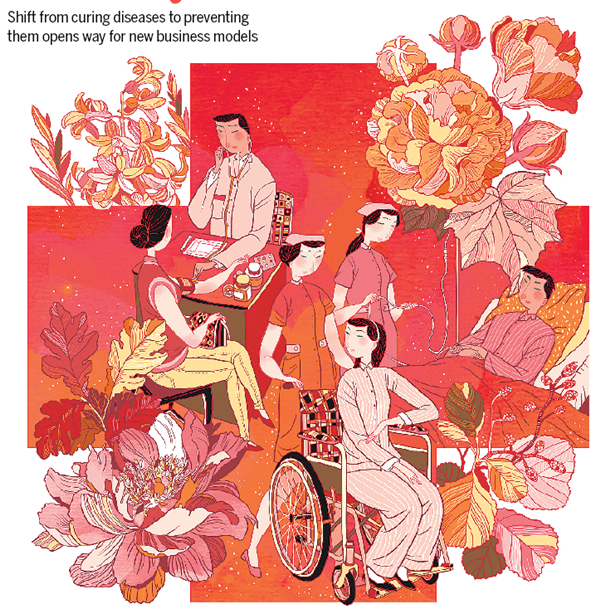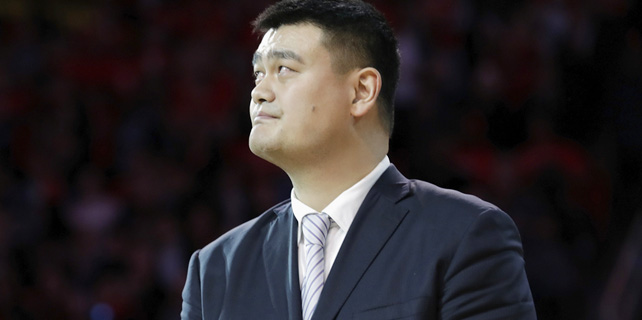Healthy future

Through improvements in nutrition, a tenfold reduction in infant mortality, a 97 percent cut in the incidence of communicable diseases and fast increases in public health spending to improve sanitation, water quality and access to care, China has made rapid progress in improving the life expectancy and health of the population.
Realizing that progress from now on will be based on improved medical care rather than on public health measures, and thus more difficult to achieve, China has embarked on a multi decade program of structural reform of the medical care system.
The central government is pushing provinces, cities and counties to experiment to find out what works — and what does not — before going national with successful reforms.
The 13th Five-Year Plan, (2016-20), calls for increased private and foreign involvement in healthcare. Many companies — domestic and foreign, state-owned and private — see tantalizing opportunities, but are struggling to find viable business models. Constraints on commercial firms are being loosened, but significant obstacles remain.
China’s healthcare spending as a percentage of GDP grew from about 2 percent in 2005 to 3.5 percent in 2009 when the reform started, to about 6 percent today. In a time of rapid GDP growth, this was almost a tripling of real healthcare spending. Total expenditures are now about 4 trillion yuan ($435 billion) and research by Deloitte Analysis predicts it will top 8 trillion yuan by 2020. By 2030, total Chinese spending on healthcare will reach 16 trillion yuan, 10 percent of that year’s expected GDP.
Private equity and venture capital funds, insurance companies, and foreign pharmaceutical, hospital and tech companies are flowing into the market. China healthcare mergers and acquisitions surged from $18.8 billion in 2014 to $54 billion in 2015. But companies in all healthcare sectors are finding that succeeding in China’s healthcare market requires patient, long-term, large investments and the willingness to adapt to changes in the system.
Gu Xuefei, deputy dean of the China National Health Development Research Center of the National Health and Family Planning Commission, says: “The most important achievement is, in a relatively short period of time, building a universal network of basic healthcare, covering 98 percent of the population, both urban and rural. With expanded social insurance, people now dare to see a doctor, so minor illnesses don’t turn into serious ones.”
According to NHFPC data, the percentage of patients who were not hospitalized but should have been fell from 29.8 percent in 2003 to 17.1 percent in 2013 and is continuing to fall. In 2016, the government paid 420 yuan toward basic medical insurance for the more than 40 percent of the population still living in rural areas, with the individual paying only 120 yuan. Urban dwellers pay slightly more but receive a more complete level of coverage, so almost everyone can afford basic medical insurance.
Gu stresses the importance of the private sector: “China will optimize the environment for private capital to run hospitals and clinics. It will give non public and public providers equivalent rights to get approval to launch to the market and will give patients the right to use social insurance in private hospitals and clinics.”
Furthermore, he says: “Insurance companies are being encouraged to develop new products that cover critical illnesses, especially cancer. They are also strongly encouraged to develop systems that provide managed care, integrating lifestyle changes and preventive medicine, for the four big chronic diseases — diabetes, coronary artery disease, high blood pressure and strokes.
The government is eager to contract with private sector companies or non profit organizations to provide these services. Local and provincial governments are being instructed to leave enough space for private capital in their healthcare planning and to treat private and public providers equally.”
At the same time, the country is planning to broaden and deepen healthcare coverage, it is also dealing with rising costs due to an aging population and a slowing economy.
Recent academic research shows that about half of China’s locally managed social health insurance funds are not covering their costs.
In a May, 2015 statement, the State Council, China’s cabinet, announced the objective of eliminating the dependence of hospitals on income from the sale of pharmaceuticals, thus making medical services more affordable and removing incentives for doctors to prescribe excessive drugs. A survey of Beijing hospitals showed that in 2014 they received 50-80 percent of their revenue from drug sales. Gu reports that this fraction has now fallen to 30-40 percent for many hospitals. Yet other funding sources, from the government, patients or insurers, must be found.
Clinics and family doctors
The Chinese medical system has traditionally centered on large urban hospitals. Even though they are crowded and lots of waiting is required, many patients prefer them because they doubt the quality of clinics, family doctors and lower-tier hospitals. But Healthy China 2030, a planning blueprint issued by the State Council and the Central Committee of the Communist Party of China sees changing to a family doctor system as key to the 13th Five-Year plan (2016-20).
Also, a 2016 report from China’s Finance Ministry and the Ministry of Human Resources and Social Security, the NHFPC, the World Bank and the World Health Organization, stated that shifting from hospitals to family doctors and smaller clinics is the basis for providing better “patient-centered” service at affordable costs.
Roberta Lipson, a US citizen who has lived in China since 1979 and is chair and founder of United Family Hospitals, which has hospitals and clinics in China’s major cities, emphasizes that the hospital has been pushing the family doctor model since its founding in 1996.
“Integrated systems like this can make healthcare both more convenient and — by managing long-term care and moving simpler care to clinics — more cost-effective,” Lipson says. “Linking family doctors and hospitals can also overcome the fear, prevalent in China, that small clinics have lower quality doctors and equipment.”
UFH is now owned by private equity investors, primarily US-based TPG and China’s Fosun Group.
Lipson says that several problems limit the ability of foreign companies to invest more. Patients at UFH, 70 percent of whom are Chinese, cannot use social insurance to pay, even though Beijing social insurance would cover 60-70 percent of the costs for many treatments. Furthermore, foreign-owned hospitals are not able to open branches. So, for tax purposes, the losses from a newly opened clinic cannot counter profits from long-established sites. In building-out its 10 clinics in Beijing, some years UFH paid taxes of more than 100 percent of its total profits.
Dong Yuxing, deputy general manager for healthcare management at PICC Health, which is a subsidiary of one of China’s largest insurers, People’s Insurance Company (Group) of China, says the company is experimenting with business models ranging from assisting local governments with healthcare administration, to managed care packages, to various insurance products.
“The healthy China concept will focus on disease prevention, not just treatment,” Dong says.
For example, PICC Health in January 2016 signed a contract worth about 20 million yuan with the city of Baoji, in northwestern China’s Shaanxi province, which has been designated as a medical reform test city. The first step will be digitizing and applying big data analysis to the city’s healthcare records, which are now just on paper.
The planned second step is to experiment with a managed care program in which the insurance company receives a fixed fee, shared by the government and patient, to provide all healthcare services during the year.
“Such managed care could reduce total costs by providing early intervention, encouraging lifestyle changes and simplifying paperwork. If this works, it could reduce the costs of China’s growing chronic disease problem,” Dong says.
Similarly, PICC Health is managing the critical medical fund in the city of Wuhu, in eastern China’s Anhui province, where medical reforms were first experimentally implemented in 2009. These kinds of test cases are seen as ways for the government and the commercial sector to find workable models.
United Family Hospitals also has been experimenting with managed care in conjunction with Yong An Insurance Company through its “Hemu” insurance model. United Family is proactively paid for preventive services, and the hospital, insurance company and patient all benefit when the patient is kept healthy.
Dong emphasizes that “commercial insurers need to work out what incentives could lead them to take the risk from the government. Unless they learn how to manage risks, they will have to foot the bill for medical care for the Chinese people, which is supposed to be the job of the government.”
Pharmaceuticals
Pharmaceutical sales in China are already the second-largest in the world — more than $115 billion, according to the IMS Institute for Healthcare Informatics. Analysis by Global Data, predicts that sales will rise to $315 billion by 2020. So no big pharma company can afford to ignore the market.
Prices of some major drugs are expected to be cut in half as provincial governments bargain hard, according to a Caixin report. But, in spite of the price pressure, due to consumer demand and the availability of skilled research scientists, global pharmaceutical companies plan to invest more than $2.1 billion in China by 2019.
Foreign drug companies are adapting their strategies to the healthcare reform goal of promoting family doctors and clinics. For example, Paris-based Sanofi “sees broadening its geographic coverage to lower-tier cities as a high strategic priority. So, it established a business unit to market its products, especially its treatments for cardiovascular disease and diabetes, to community clinics and to county hospitals in remote areas,” according to a marketing director at the company’s office in Shanghai who asked not to be named. Sanofi’s chronic disease treatment sales are growing more than 15 percent per year.
















